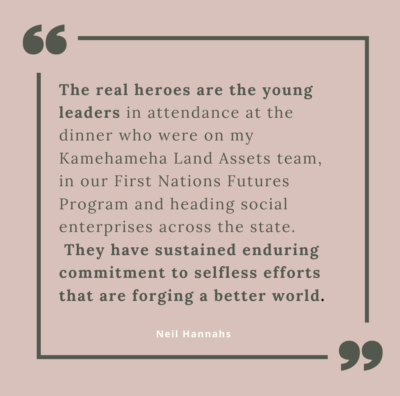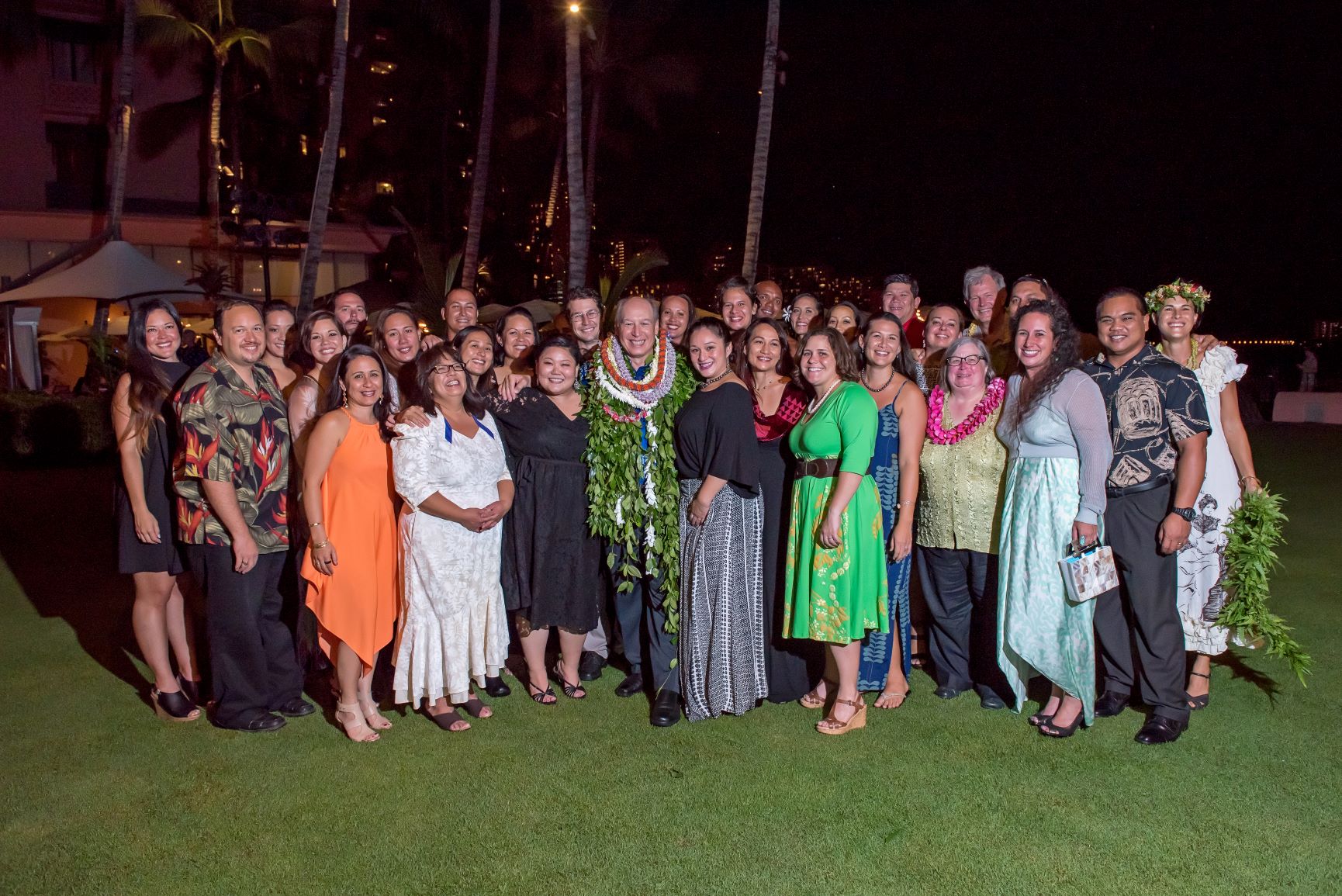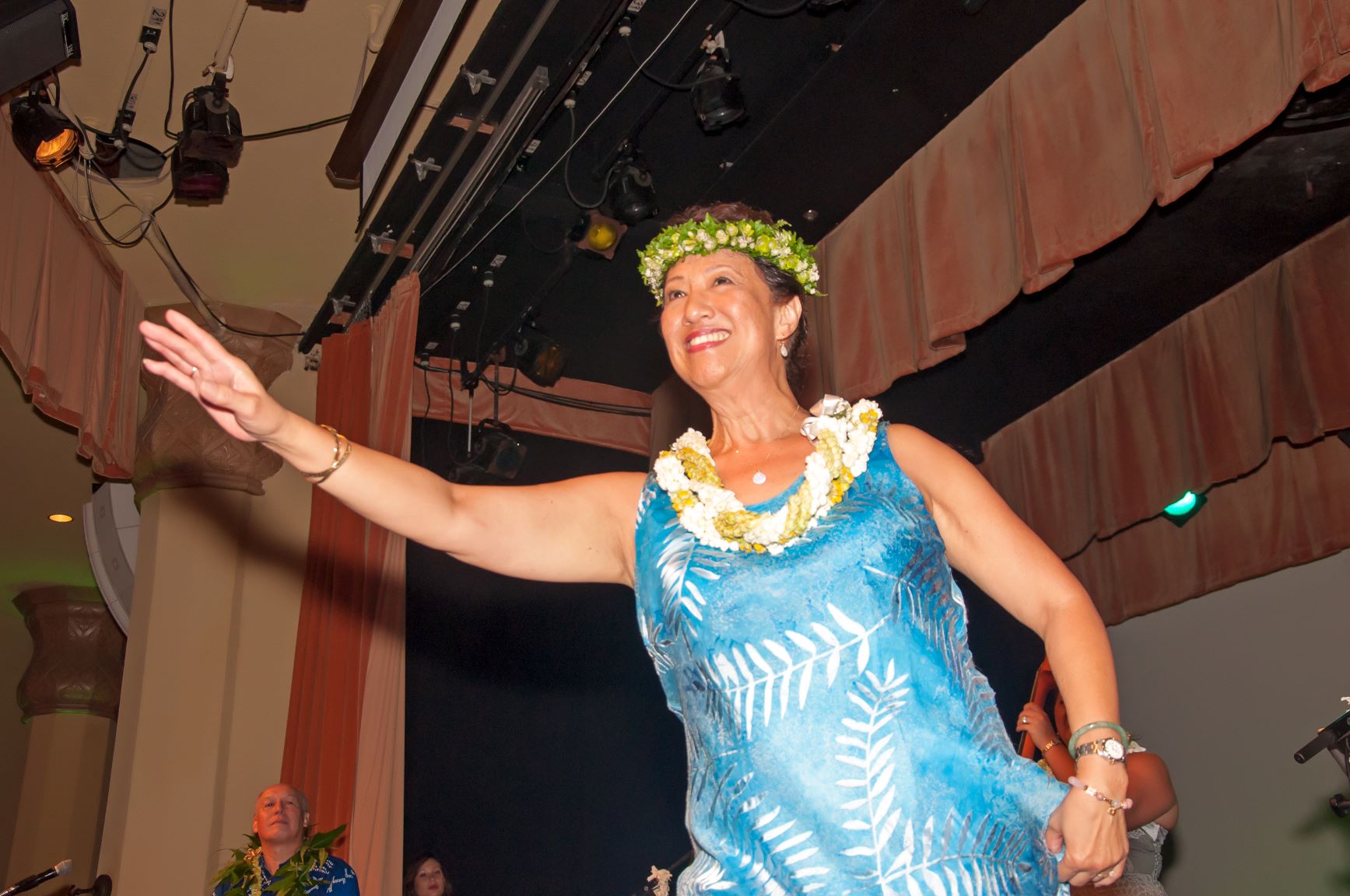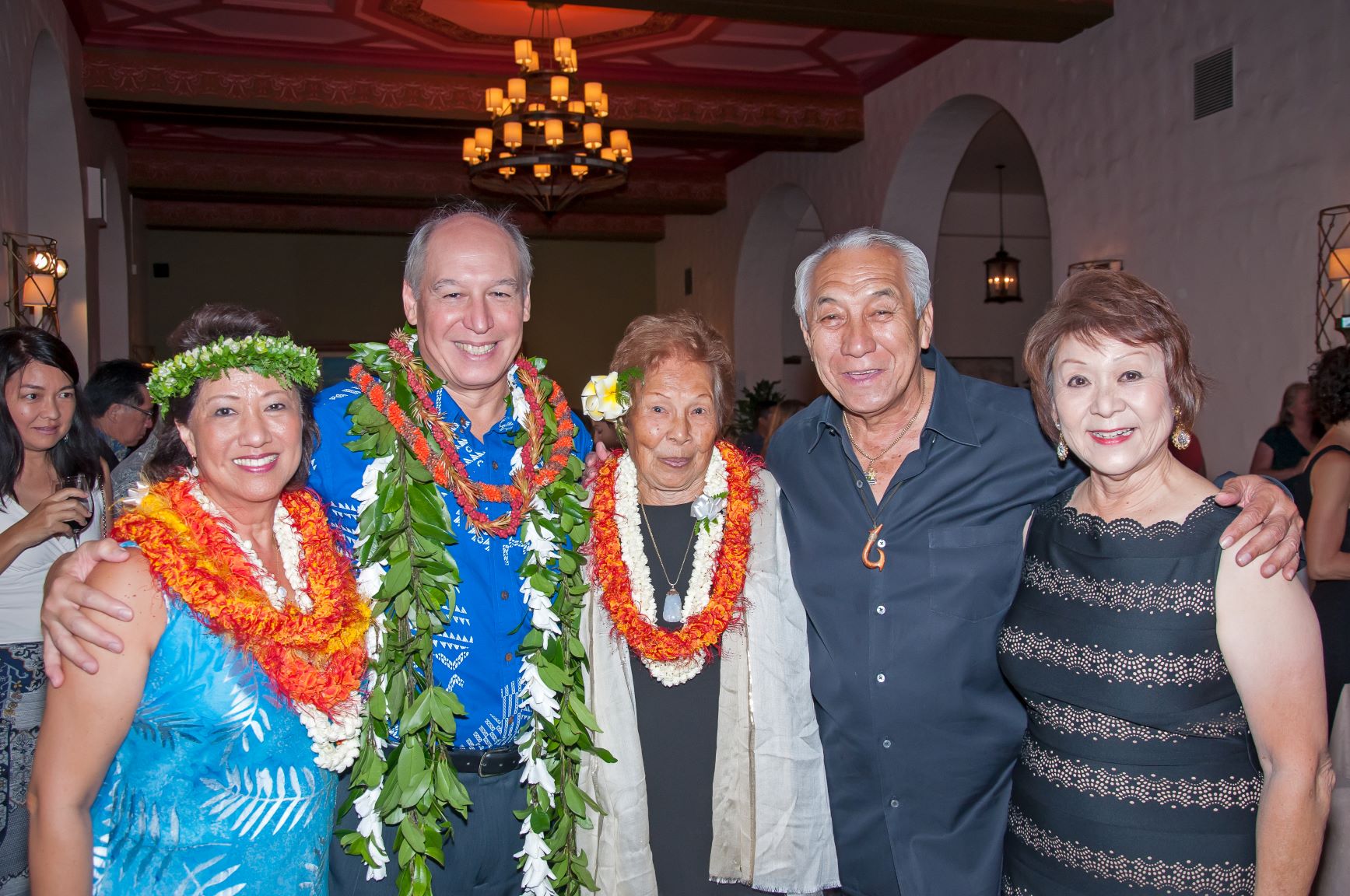In September of 2015, Historic Hawai‘i Foundation had the honor of celebrating Neil Hannahs, who was responsible for managing 358,000 acres of agriculture and conservation lands in Hawai‘i for the Land Assets Division of Kamehameha Schools. Neil was a catalyst for change, introducing an ‘āina-based, sustainable systems approach to land management, essentially ushering in a new chapter in KS’ role as landowner. As an advisor for community organizations like MA‘O Farms in Wai‘anae, Neil has also helped develop social enterprise among native Hawaiians to engage them in these strategies.
In light of his achievements, it caught many by surprise when Neil announced his retirement during his acceptance remarks at the Kama‘āina of the Year event. Last month, about five years later, we reconnected with him and—this time unsurprisingly—he had lots of news and positive vibes to share.
HHF: In 2015 when you were celebrated as Kama‘āina of the Year, the love and aloha for you among the guests was so beautiful and it was an honor for HHF to be a part of that. How has your transition to retirement been? Can you share with us what you’ve been up to?
NH: Wow, has it been five years since that lovefest? My memory of the evening remains vivid and I will always be grateful to HHF for enabling this extraordinary moment in my life. I still have not convinced myself that I was deserving of such honor. The real heroes are the young leaders in attendance at the dinner who were on my Kamehameha Land Assets team, in our First Nations Futures Program and heading social enterprises across the state. They have sustained enduring commitment to selfless efforts that are forging a better world. My biggest achievements were in identifying their potential and trying to put a bit of wind under their wings.
 If retirement is seen as sedentary existence, then I have failed badly! Shortly after the Kamaʻāina of the Year event, I concluded my 41+ year tenure at Kamehameha and formed Hoʻokele Strategies to continue to make modest contributions to a larger movement seeking to deepen our connection to place, redefine wealth, restore environmental vibrance and enhance the wellbeing of our society.
If retirement is seen as sedentary existence, then I have failed badly! Shortly after the Kamaʻāina of the Year event, I concluded my 41+ year tenure at Kamehameha and formed Hoʻokele Strategies to continue to make modest contributions to a larger movement seeking to deepen our connection to place, redefine wealth, restore environmental vibrance and enhance the wellbeing of our society.
I often serve as a sounding board for leaders and enterprises who aspire to achieve transformative outcomes. My suggestions are received with commendable grace, considering how annoying it can be to have one’s assumptions, analysis and impacts challenged. I ask a lot of questions. What makes your work so important? Why should others care? What evidence do you have? Did you consider…? What is your theory of change? How are you different? What are the risks? How will you fund your plans? Might you partner with…? Are you thinking big enough?
You get the idea. My intentions are to: avoid repeating past failures; push folks out of their comfort zone; unleash dreams; and strengthen the ability to deliver on promise. This mentoring forces people who already have full plates to do more heavy lifting. I can’t tell you how inspiring and energizing it is to witness their drive to learn, grow and make a difference.
HHF: What kinds of changes have you noticed in land stewardship and in communities like He‘eia since 2015?
NH: I truly believe that the strategy of community-based management to achieve a balance of cultural, environmental, economic, educational and community benefits, that seemed so revolutionary in 2000, has become the new standard for land and resource management.
The work pioneered by Paepae o Heʻeia, Papahana Kuaola, Hui Kū Maoli Ola and Kakoʻo ʻŌiwi is now an ahupuaʻa-scale collaboration that also includes Kamehameha Schools, The Nature Conservancy, State Departments, the Board of Water Supply, the University of Hawaiʻi and others. As a result, Heʻeia has become part of the National Estuarine Research network of 28 sites in the United States that are protected for long-term research, water-quality monitoring, education and coastal stewardship. They’ve progressed from outlier to role model; what an accomplishment!
HHF: With climate change becoming a growing concern, can you share examples of the kinds of action people can take to promote/support indigenous land management and cultural practices as a model? Are there individuals or organizations that serve as leaders in this regard?
NH: I like the way you framed that question. We keep hearing about the “existential risk of climate change” and I worry that people are growing numb to the warning and resigned to calamitous outcomes. I believe the needed change begins with each of us and what we do right here. Here are some examples.
- Twenty years ago, when it came to conservation issues, there was more antagonism than collaboration between resource managers, scientists, cultural practitioners and youth. Now, thanks to the efforts of the Hawaiʻi Conservation Alliance, you see much more alignment of these diverse stakeholders. The integration of community in management strategies is becoming the norm and is producing beneficial impacts in terrestrial and marine systems across the pae ʻāina.
- At considerable risk and expense, the Polynesian Voyaging Society sailed around the world to bring attention to the need to stem, mitigate and reverse the insidious affects of climate change. Hōkūleʻa departed Hawaiʻi with a crew of humble islanders whose homelands are at the mercy of larger geo-political and economic forces. They returned from their heroic journey having fostered a global understanding that the survival of the planet will turn on the fate of the oceans. And the fate of the oceans will turn on the health of the Pacific. And the health of the Pacific will turn on the re-engagement of the values and practices of indigenous peoples; who feel genealogically descendent from place; who believe the privilege of resource use demands a reciprocal obligation to steward and restore; who measure success by the abundance available for future generations. Our voyagers ventured forth as victims of a failing paradigm and returned as navigators to a new way of being.
- I joined the State Commission on Water Resources Management knowing that it was at the center of many conflicts. But our members share a lot of common ground and are endeavoring to resolve these issues by making balanced policy decisions that promote sustainability, enhance streams, meet cultural needs, ensure prudent use and induce investment in modern, efficient infrastructure.
- In response to the COVID crisis that crippled our economy, a number of the young leaders who were present at the Kamaʻāina of the Year dinner joined with others to form ʻĀina Aloha Economic Futures. This hui is advocating values, tools and ideas to assure that the economy rising from the ashes of the pandemic is more just and regenerative. Key to their theory of change is that financial investment must generate waiwai, not just kālā. Our kūpuna understood that and we should apply their multi-value analysis to modern business propositions.
- I am pleased to be contributing to a proof point through a consulting role with Paniolo Tonewoods, a partnership including Taylor Guitars and the world’s largest mill for musical tonewood. We harvest koa for guitars and ʻukulele under stewardship contracts with landowners. These agreements require the stumpage value to be redeployed in land management strategies that will improve forest health and increase future resource abundance. Like other circular economies, it is premised on using proceeds from a commercial use of a natural resource to pay for conservation.
HHF: What has been a source of inspiration to you recently?
NH: I don’t want to fan a political flame, but Mariane and I are much relieved by the presidential election outcome and pray for a return of civility in our public discourse and the rebuilding of bipartisan alliances that bridge the widening divide in communities across the nation.
On a local level, have you been tracking the tremendous developments at MAʻO Farms? They hold a special place in my heart, not only because I am a past board member, but because they serve the Westside community where I grew up and where Mom and other family still reside. MAʻOʻs innovative social enterprise approach to organic farming is being acknowledged and rewarded with funding to purchase additional land, increase agricultural production and support the college education of more youth.
Finally, my Kamaʻāina of the Year after-party was spent in my hotel room with family, including our first grandchild who was about a month old at the time. Today, KJ is five years old and his sister Audrey is 3 and a half. And in September 2019, they were blessed with a cousin when Līhau and Kellen had their first child, Jemma.
Moʻopuna have not only provided a wellspring of love for me and Mariane, but also a reminder of the turning of seasons. They stir memories of days gone by, prompt reflection on how quickly the years pass and inspire actions that we hope will benefit their lives long after we have departed.
We are experiencing life’s beautiful cycle and recognize that it is a divine gift.
Beth Iwata, Director of Development
Photos from the Kamaaina of the Year event 2015 by BK Photos: Neil Hannahs outside of the Monarch Room with graduates of the First Nations Futures Program; Mariane Hannahs danced a hula dedicated to her husband; Neil and Mariane with his mother and Danny and Jacqueline Kaleikini.
The tribute video sharing Neil’s story and additional photos from the event are available here.




